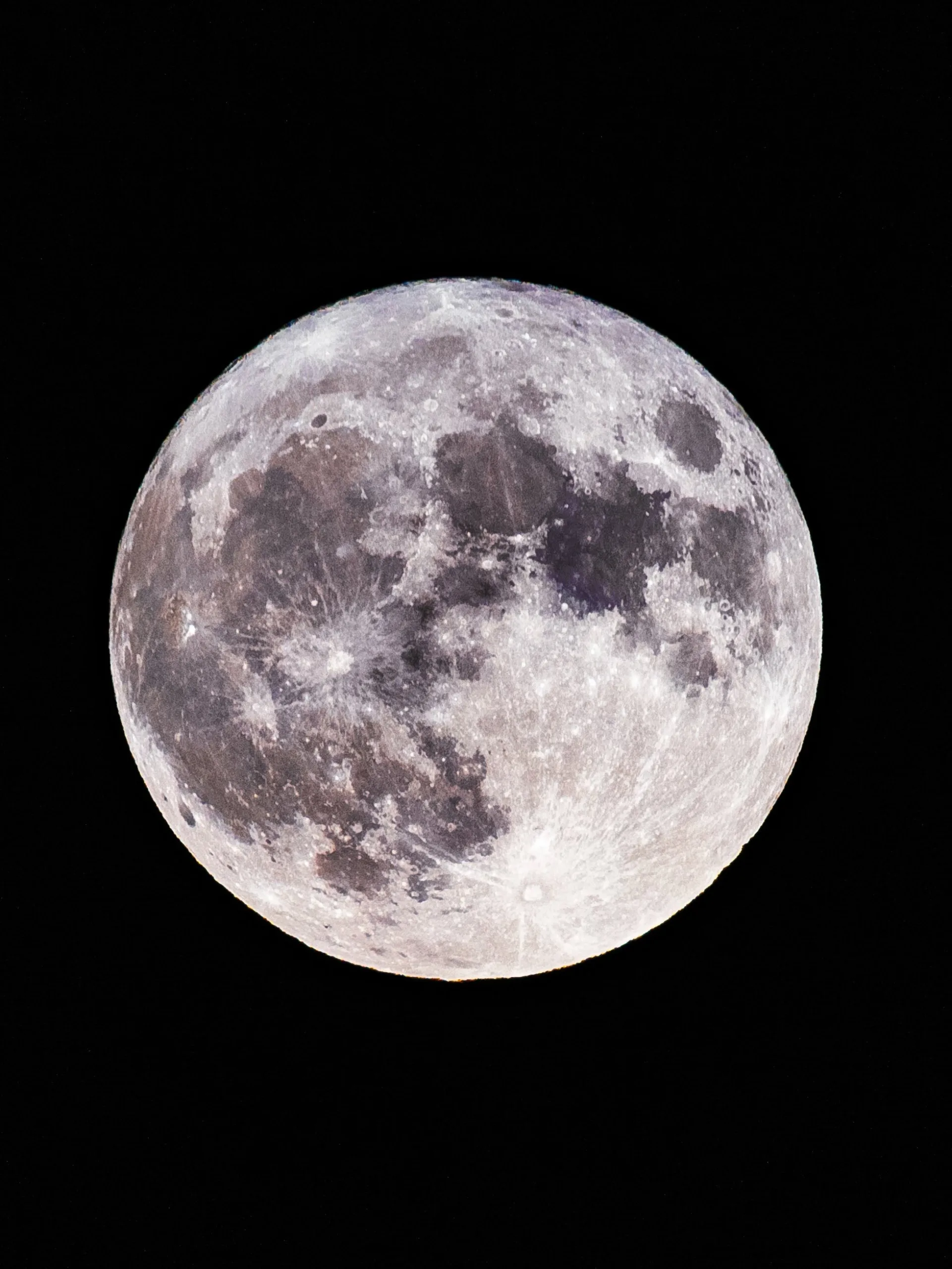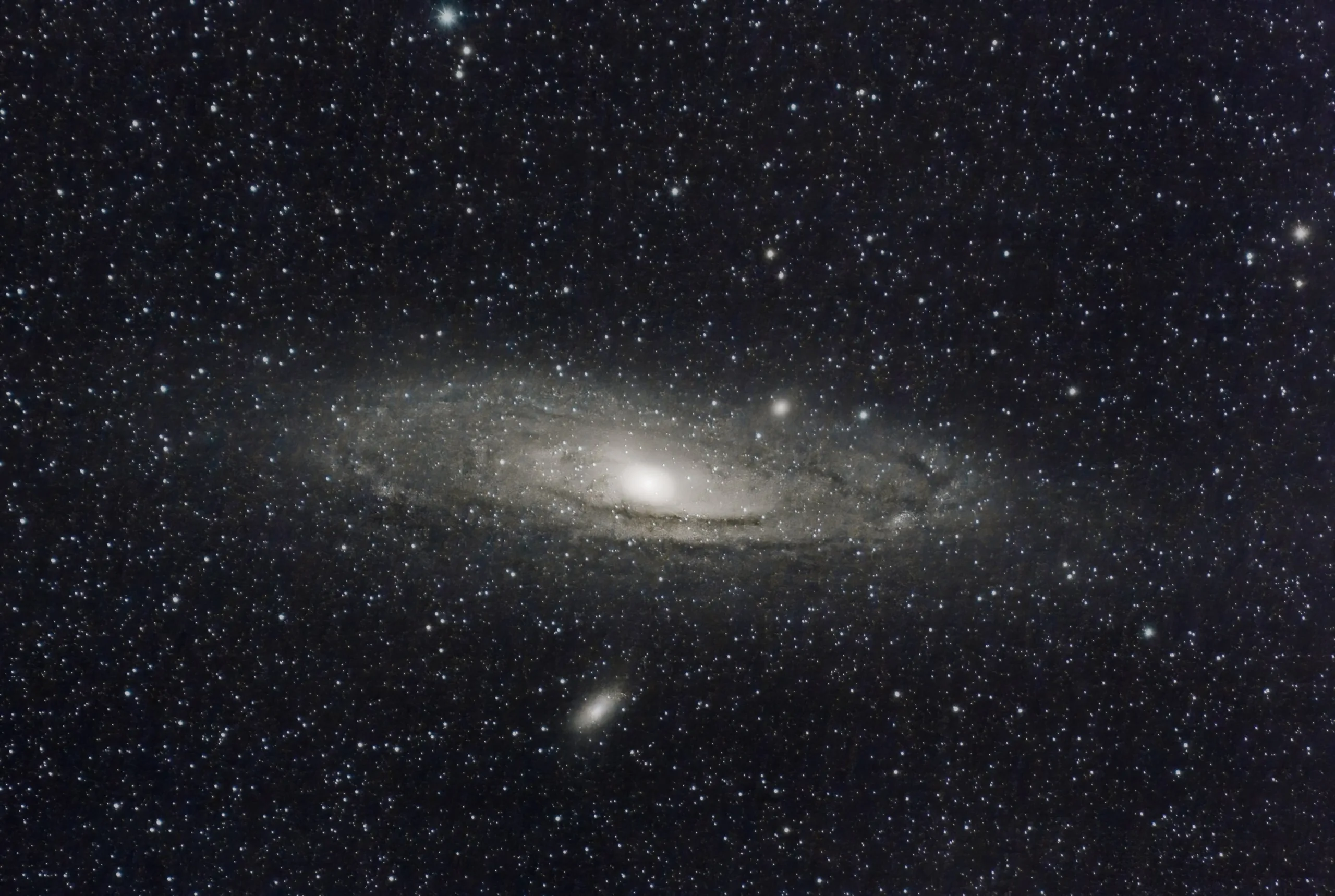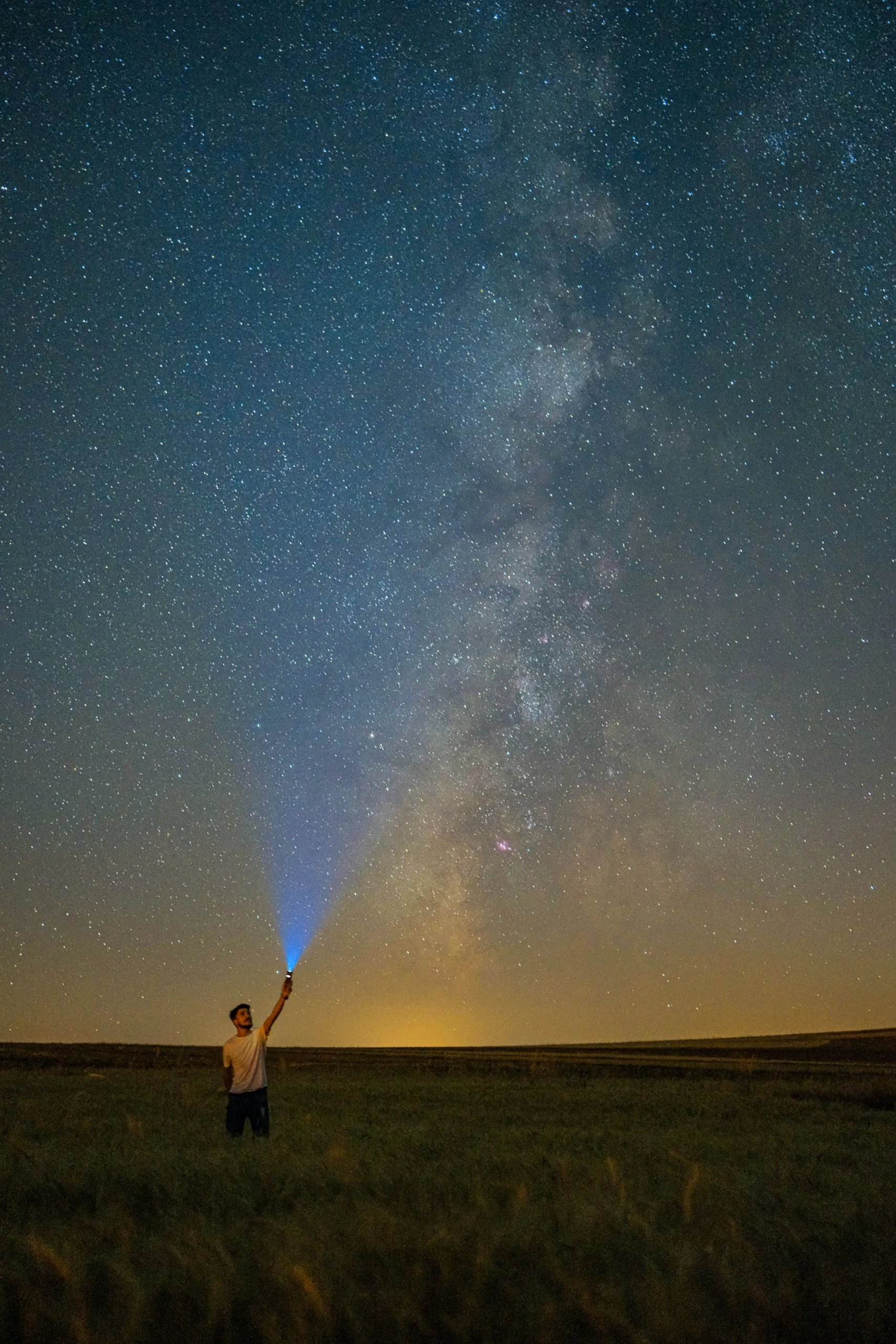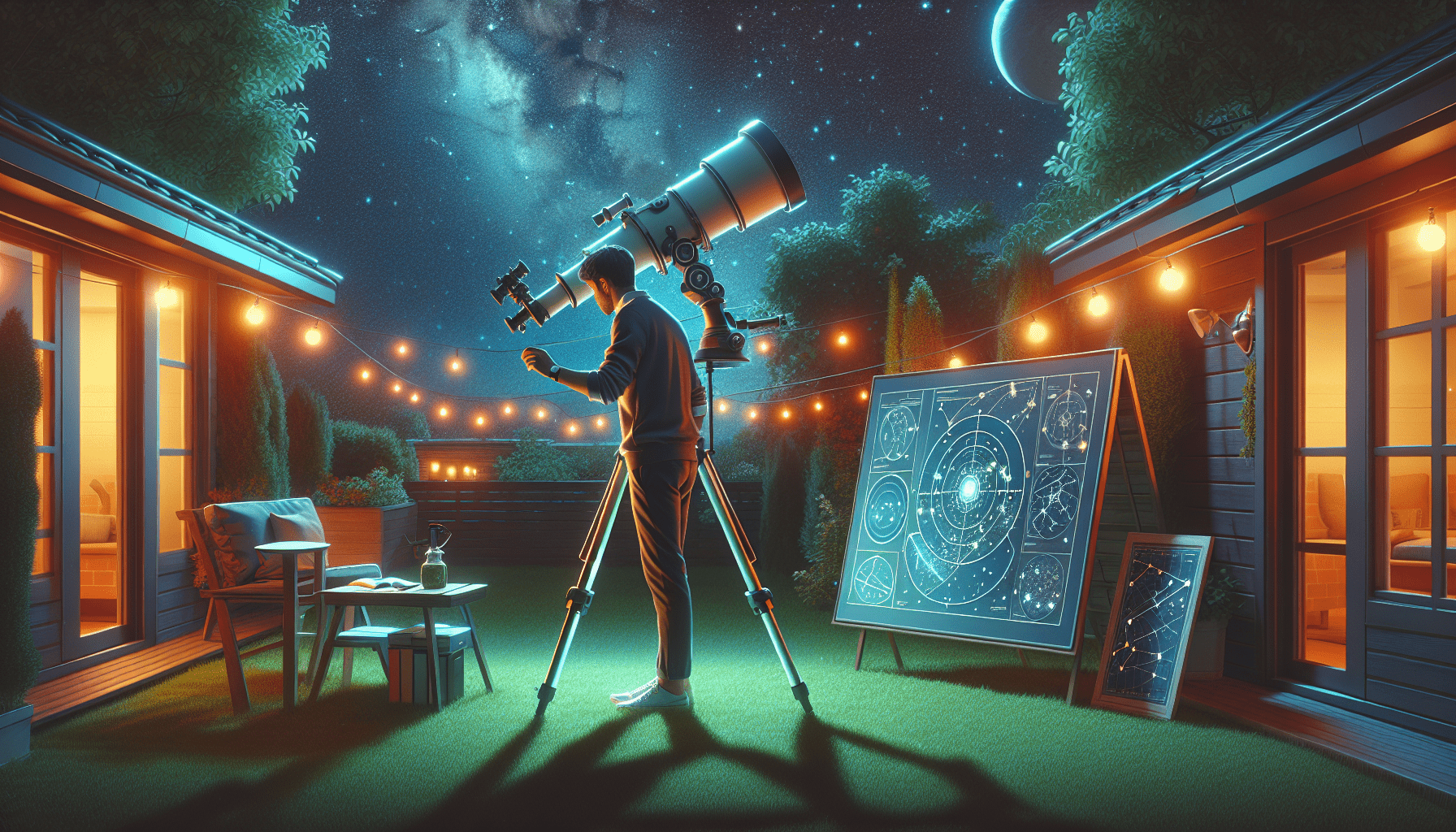Step into the world of stargazing and discover the wonders of the night sky with your very own backyard telescope. Expand your horizons and gaze into the vast expanse above as you embark on an adventure of celestial exploration. Journey through galaxies and witness the majesty of constellations as they twinkle and dance, all from the comfort of your own home. With a backyard telescope, the universe becomes your playground, inviting you to unravel its mysteries and unlock its secrets. So, what are you waiting for? Let’s delve into the captivating art of observing with a backyard telescope and embark on an unforgettable journey through the cosmos.
Table of Contents
Benefits of Using a Backyard Telescope
Improved Visibility
Using a backyard telescope can significantly improve your visibility of celestial objects. Unlike the naked eye, a telescope has the ability to gather and focus light, allowing you to see fainter objects and details that would otherwise be invisible. With a telescope, you can explore the depths of our universe and uncover the beauty of distant galaxies, star clusters, and nebulae.
Access to Celestial Events
Owning a backyard telescope opens up a world of opportunities to witness and enjoy celestial events. From meteor showers and lunar eclipses to the transit of Venus or the rare alignment of planets, a telescope allows you to observe and appreciate these extraordinary occurrences in real-time. Being able to witness these events firsthand can be a truly awe-inspiring experience.
Study of Planetary Bodies
One of the most captivating aspects of using a backyard telescope is the ability to study and observe planets in our solar system. With a telescope, you can observe the intricate details of Jupiter’s Great Red Spot, the beautiful rings of Saturn, and the polar ice caps of Mars. You can also track the phases of Venus and study the moons of these planets. Observing these planetary bodies allows you to gain a deeper understanding of their characteristics and dynamics.
Understanding Astronomical Phenomena
A backyard telescope provides an opportunity to delve into the fascinating world of astronomical phenomena. By observing stars, galaxies, and other celestial objects, you can better comprehend concepts such as stellar evolution, the formation of galaxies, and the life cycle of stars. Through firsthand observations, you can develop a greater appreciation for the vastness and complexity of the universe.
Factors to Consider When Choosing a Backyard Telescope
Aperture and Light Gathering Capacity
The aperture of a telescope refers to the diameter of its primary mirror or lens. A larger aperture allows more light to enter the telescope, resulting in brighter and clearer views. Consider the types of objects you wish to observe and choose a telescope with an appropriate aperture size for your needs. Remember that a larger aperture often results in a bulkier and more expensive telescope.
Focal Length and Magnification
The focal length of a telescope determines its magnification capabilities. A longer focal length generally provides higher magnification, allowing for closer views of distant objects. However, high magnification may result in a narrower field of view and reduced brightness. Consider the balance between magnification and field of view when selecting a telescope.
Mount Type and Stability
A stable mount is crucial for smooth and accurate tracking of celestial objects. There are two primary types of telescope mounts: altazimuth and equatorial. Altazimuth mounts are simpler and more intuitive, while equatorial mounts are designed for precise sky tracking. Consider the type of observing you plan to do and choose a mount that complements your needs.
Portability and Ease of Setup
When selecting a backyard telescope, consider its portability and ease of setup. If you plan to travel frequently with your telescope or have limited storage space, a compact and lightweight option would be ideal. Additionally, consider the complexity of assembling and aligning the telescope, especially if you are a beginner. Look for telescopes that offer straightforward setup instructions and user-friendly features.

Recommended Backyard Telescopes for Beginners
Celestron PowerSeeker 127EQ
The Celestron PowerSeeker 127EQ is an excellent entry-level telescope for beginners. With a 127mm aperture and a focal length of 1000mm, it offers a good balance between light gathering capacity and magnification. This telescope comes with an equatorial mount, providing smooth tracking and easy navigation of the night sky. The PowerSeeker 127EQ is also relatively affordable, making it an attractive option for those new to astronomy.
Orion StarBlast 4.5 Equatorial Reflector
The Orion StarBlast 4.5 Equatorial Reflector is another great choice for beginners looking for a portable and user-friendly telescope. With a 114mm aperture and a focal length of 450mm, it is compact yet powerful. The equatorial mount allows for precise tracking, and the telescope’s sturdy build ensures stability during observations. The StarBlast 4.5 is known for its sharp image quality and ease of use.
Meade Instruments Infinity 102mm Refractor
The Meade Instruments Infinity 102mm Refractor is a versatile telescope suitable for both beginners and intermediate astronomers. With a 102mm aperture and a focal length of 600mm, it provides excellent views of both celestial objects and terrestrial landscapes. The altazimuth mount makes it easy to navigate the sky, and the telescope’s compact design enhances portability. The Infinity 102mm Refractor is known for its durability and clear optics.
Setting Up Your Backyard Telescope
Choosing a Suitable Location
Selecting a suitable location for your backyard telescope is crucial for optimal viewing conditions. Find an area away from sources of light pollution, such as streetlights and buildings. Ideally, choose a spot with an unobstructed view of the sky. If possible, set up your telescope on a stable surface, such as a concrete patio or a sturdy tripod, to minimize vibrations.
Assembling the Telescope
Assembling your telescope may seem daunting at first, but most models come with detailed instructions to guide you through the process. Start by attaching the mount to the tripod or base, ensuring it is securely fastened. Then, attach the telescope tube to the mount, making sure it is aligned properly. Finally, attach any additional accessories, such as eyepieces or filters, as per the manufacturer’s instructions.
Aligning the Finder Scope
The finder scope is a small telescope mounted alongside the main telescope tube. It helps you locate and center objects in the sky before viewing them through the main telescope. Aligning the finder scope is essential to ensure accurate pointing. Start by aligning the finder scope during the day, aiming at a distant object like a tree or a building. Once aligned, the finder scope should help you locate objects easily at night.
Calibrating the Mount
A well-calibrated mount is essential for smooth and accurate tracking of celestial objects. Depending on the type of mount, the calibration process may involve leveling the tripod, aligning the mount with the celestial equator, or using alignment stars. Follow the instructions provided by the manufacturer to calibrate your mount properly. Taking the time to calibrate the mount will greatly enhance your observing experience.

Exploring the Moon with Your Backyard Telescope
Observing Lunar Features
The Moon is a fascinating object to observe with a backyard telescope. Its surface is adorned with various features, such as craters, mountains, and valleys. Through the telescope, you can explore the intricate details of these lunar landscapes, observing their sizes, shapes, and textures. You might be surprised by the stunning beauty and complexity of Earth’s celestial companion.
Identifying Major Craters and Maria
Using a backyard telescope, you can easily identify and study major lunar craters and maria. Craters like Tycho, Copernicus, and Clavius are well-known examples of distinct lunar features. By observing these craters, you can appreciate their size, depth, and surrounding ejecta patterns. You can also observe the dark, flat areas known as maria, which are ancient lava-filled plains on the Moon’s surface.
Tracking Lunar Phases and Libration
With your backyard telescope, you can track the phases of the moon and its libration, which is the slight rocking motion of the Moon as seen from Earth. Witnessing the changing phases of the Moon, from a thin crescent to a full disk, provides a deeper understanding of Earth’s celestial dance with its natural satellite. Observing libration allows you to see slightly different angles and perspectives of the Moon, revealing additional surface features.
Discovering Planets and Moons
Spotting the Galilean Moons of Jupiter
Jupiter, the largest planet in our solar system, is a captivating sight through a backyard telescope. Its prominent feature is its system of four large moons known as the Galilean moons—Io, Europa, Ganymede, and Callisto. Observing these moons reveals their orbits around Jupiter and allows you to witness their changing positions over time. It is truly remarkable to witness the dance of these moons around a gas giant planet.
Observing Saturn’s Rings and Moons
Saturn, with its iconic rings, is an awe-inspiring object to observe with a backyard telescope. The rings, composed of countless icy particles, give Saturn its unique appearance. Through your telescope, you can see the distinct gaps and divisions within the rings and even observe the shadow of the rings on Saturn’s surface. Additionally, you can observe some of Saturn’s moons, such as Titan, which is the largest moon in the solar system.
Tracking Mars and Its Polar Ice Caps
Mars, the red planet, is a popular target for backyard telescope enthusiasts. By observing Mars, you can witness its changing surface features, such as the intricate patterns of dark and light regions. You can also track the seasonal changes in Mars’ polar ice caps, which shrink and grow with the planet’s changing climate. Observing Mars can provide valuable insights into the geology and atmospheric conditions of this neighboring planet.
Identifying Venus and Its Phases
Venus, often referred to as Earth’s twin, is a striking object to observe with a telescope. Its thick atmosphere creates a greenhouse effect, making it a hostile environment for life as we know it. Through your backyard telescope, you can witness the phases of Venus, similar to the phases of the Moon. Observing the changing illumination and size of Venus as it orbits the Sun can be a fascinating experience.

Observing Deep-Sky Objects
Exploring Star Clusters
Star clusters are beautiful collections of stars that are gravitationally bound together. There are two main types of star clusters: open clusters and globular clusters. Open clusters, such as the Pleiades, are relatively young and contain a few hundred to several thousand stars. Globular clusters, like the Hercules Cluster, are densely packed and contain hundreds of thousands or even millions of stars. Observing these clusters through a backyard telescope allows you to witness the rich tapestry of stars and explore their various colors and patterns.
Studying Nebulae and Supernova Remnants
Nebulae are vast interstellar clouds of gas and dust, often associated with star formation. Supernova remnants are the remnants of massive stars that have exploded in a cataclysmic supernova event. Nebulae and supernova remnants come in various shapes, sizes, and colors, making them stunning targets for observation. With your backyard telescope, you can explore these cosmic treasures and marvel at their intricate details and vibrant colors.
Observing Galaxies
Galaxies are vast systems of stars, gas, and dust held together by gravitational forces. Through a backyard telescope, you can observe a variety of galaxies, ranging from spiral galaxies like the Andromeda Galaxy to elliptical galaxies like M87. Observing galaxies allows you to appreciate the immense scale of our universe and gain insights into the formation and evolution of these cosmic structures.
Searching for Exoplanets
Advancements in technology have enabled astronomers to discover thousands of exoplanets orbiting distant stars. While observing exoplanets with a backyard telescope might not allow you to directly see these distant worlds, there are techniques that can help you detect their presence. For example, you can observe a star’s slight brightness variation caused by a planet passing in front of it, known as a transit. By participating in citizen science projects, you can contribute to the search for exoplanets and be a part of exciting astronomical discoveries.
Photographing Celestial Objects
Getting Started with Astrophotography
Astrophotography is a rewarding hobby that allows you to capture stunning images of the night sky. To get started, you will need a camera capable of long exposures, a sturdy tripod or mount to keep your camera steady, and various accessories such as adapters and filters. Learning the basics of astrophotography, including exposure settings and image stacking techniques, will help you capture breathtaking images of celestial objects.
Choosing the Right Camera and Accessories
When choosing a camera for astrophotography, consider its low light performance, sensor size, and compatibility with your telescope. DSLR cameras are popular choices due to their versatility and ability to capture detailed images. Additionally, invest in accessories such as remote shutter releases, intervalometers, and light pollution filters to enhance the quality of your astrophotography.
Capturing Images of the Moon and Planets
Capturing images of the Moon and planets requires precise focusing and exposure settings. Start by using the Live View function on your camera to focus manually on the object of interest. Experiment with different exposure settings to capture the details of the lunar surface or the intricate features of planets. Image stacking, which involves combining multiple images to reduce noise and enhance details, can further improve the quality of your lunar and planetary images.
Astrophotography Techniques for Deep-Sky Objects
Photographing deep-sky objects, such as galaxies and nebulae, requires longer exposure times and specialized techniques. To capture faint details, use longer exposures and consider using a tracking mount to compensate for Earth’s rotation. Additionally, image stacking can greatly improve the signal-to-noise ratio, revealing more details and enhancing the overall quality of the image. Experiment with different settings and techniques to capture stunning images of the awe-inspiring deep-sky objects.

Tips for Successful Backyard Observations
Understanding Light Pollution and Minimizing Its Effects
Light pollution, caused by excessive or misdirected artificial lighting, can hinder your observing experience. Choose observing locations away from bright city lights and minimize the use of white lights during your observations. Consider using light pollution filters or exploring narrowband imaging techniques to reduce the impact of light pollution and enhance your views of the night sky.
Using Filters to Enhance Observations
Filters can be valuable tools in astronomy, enhancing your observations of specific objects or phenomena. For example, a lunar filter can reduce the brightness of the Moon, allowing you to observe more details on its surface. Nebula filters can enhance the visibility of emission and planetary nebulae. Explore different filters and their effects to enhance your observing experience and uncover new details of celestial objects.
Adjusting Your Eyes for Night Vision
When observing with a backyard telescope, it is important to preserve your night vision to fully appreciate the wonders of the night sky. Spend some time adjusting to the darkness before starting your observations, as it can take up to 30 minutes for your eyes to fully adapt. Minimize exposure to bright lights during observations, and avoid looking at electronic screens or using flashlights unnecessarily. By maintaining your night vision, you can see more details and enjoy a richer observing experience.
Keeping a Record of Your Observations
Keeping a record of your observations is a valuable practice in backyard astronomy. By noting the date, time, location, and conditions of your observations, you can track your progress and identify patterns in celestial events. Additionally, recording your observations allows you to revisit and reflect on your experiences, creating a personal log of your journey through the cosmos.
Joining Astronomy Communities
Participating in Local Astronomy Clubs
Joining a local astronomy club can be a fantastic way to connect and learn from fellow enthusiasts. Astronomy clubs often organize regular star parties, where members gather to observe and share their knowledge and equipment. By joining a club, you can benefit from the collective experience and expertise of its members, attend informative presentations, and participate in group observing sessions.
Attending Star Parties and Observing Nights
Star parties are community events where people gather to observe the night sky together. They provide a unique opportunity to observe through various telescopes and interact with experienced astronomers. Many observatories and astronomy organizations also hold observing nights, during which members of the public can visit and explore the night sky with the guidance of experts. Attending these events can open up new avenues of learning and foster a sense of community among fellow stargazers.
Engaging in Online Forums and Citizen Science Projects
The internet offers a wealth of resources for astronomy enthusiasts. Online forums and discussion boards provide platforms for sharing observations, asking questions, and seeking advice. Engaging with these communities can expose you to diverse perspectives and expand your knowledge. Additionally, citizen science projects allow amateur astronomers to contribute to scientific research by collaborating with professional astronomers. Participating in such projects provides an opportunity to make meaningful contributions to the field of astronomy while learning and engaging with the scientific community.
By using a backyard telescope, you can embark on a captivating journey through the cosmos. From studying planets and moons to exploring deep-sky objects, the possibilities are endless. With the right equipment, knowledge, and enthusiasm, you can unlock the wonders of the night sky and develop a lifelong passion for astronomy. So, grab your telescope, find a cozy spot in your backyard, and prepare for an adventure unlike any other. Happy stargazing!

Related site – Getting Started with Your New Telescope
